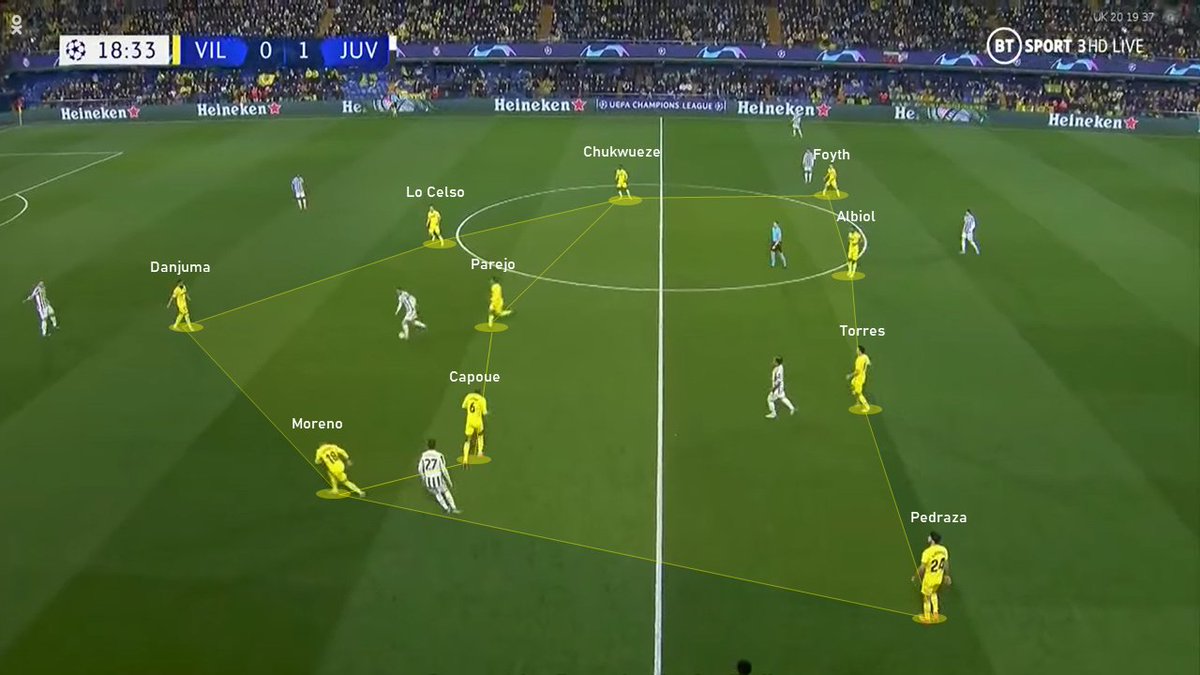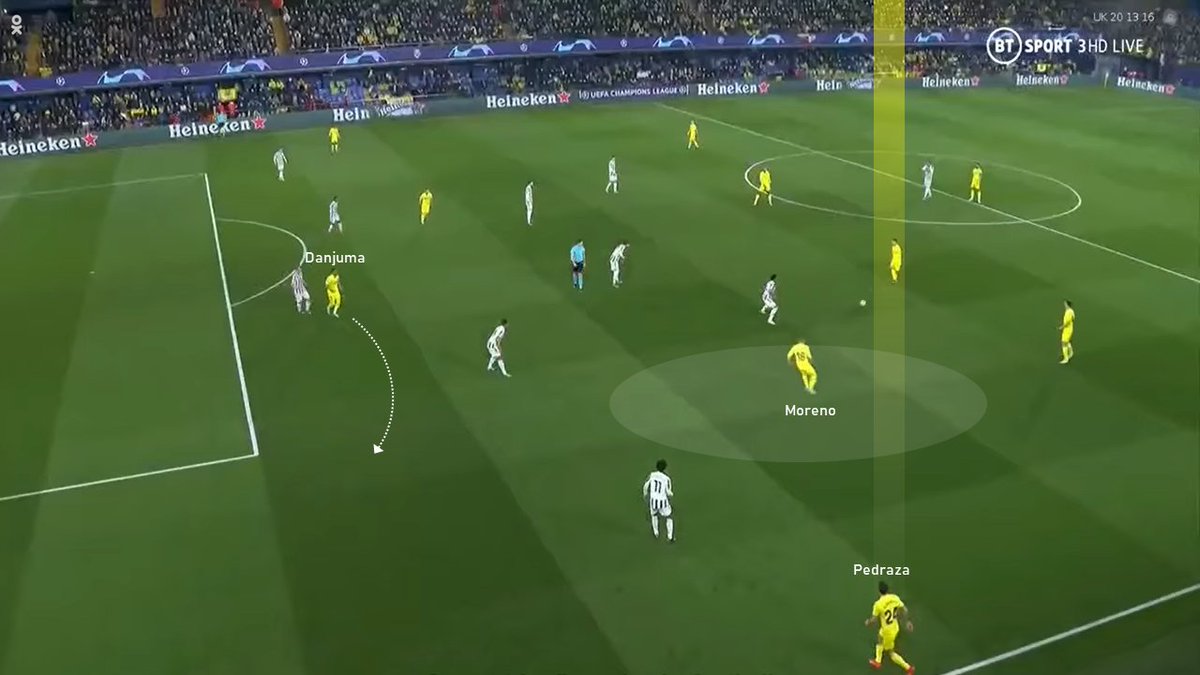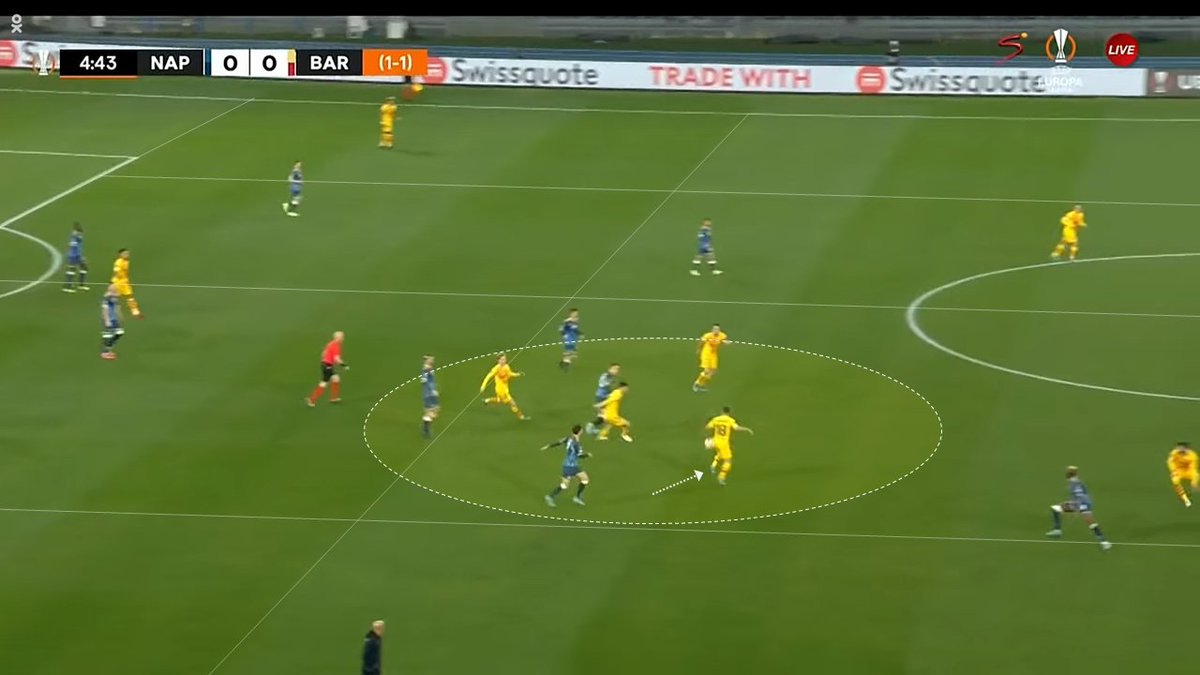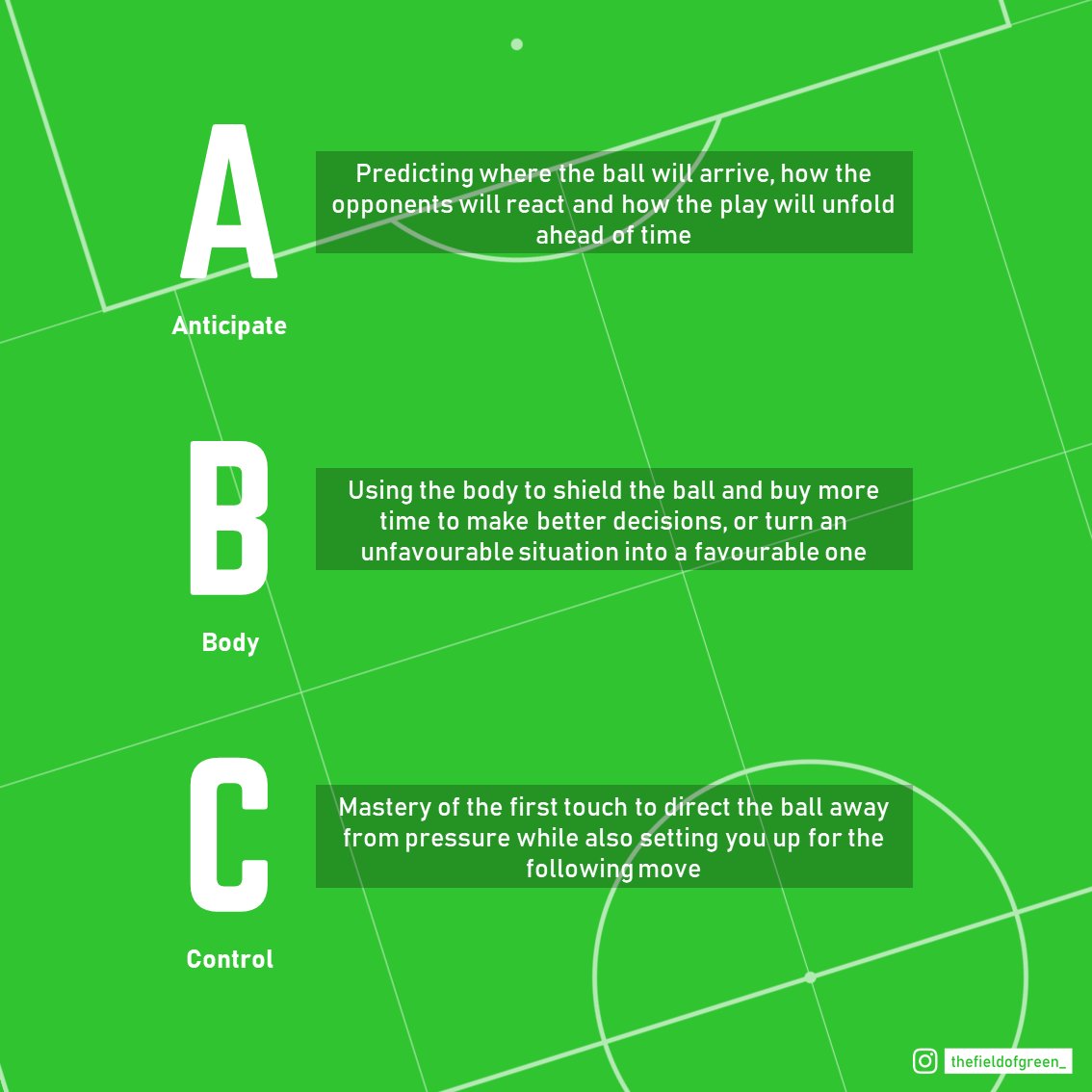Villarreal's 4-4-2 tactics versus Juventus:
• Using Pedraza more attackingly than defensively
• Moreno and Lo Celso playing between the lines
• Foyth staying back for security to construct as a back-three
#VillarrealJuve #VILJUV #ChampionsLeague
• Using Pedraza more attackingly than defensively
• Moreno and Lo Celso playing between the lines
• Foyth staying back for security to construct as a back-three
#VillarrealJuve #VILJUV #ChampionsLeague

Villarreal held a compact structure to deny spaces in the centre while keeping the block high to win back possession higher up 

Even when Juventus shifted out wide to try and play around the structure, Villarreal's 4-4-2 would shuffle across as a unit to create a man-oriented overload to try and win the ball back high up in the opponent's half 

The use of Pedraza more as a winger than a fullback was a significant feature of their game model. He constantly created overloads high up in the outside channel along with Moreno which forced Cuadrado, the LWB to defend lower 

Here we see how high up Pedraza has pushed to apply pressure on Cuadrado while the rest of Villarreal engage in a man-oriented high press in the final third 

When in possession, the high positioning of Pedraza would allow Moreno to receive in the pockets and Danjuma to make runs against the disrupted backline. His high and wide position also allowed him to win the second balls and attack inside immediately 



This meant if Cuadrado was through on the outside channel, Parejo and Pau Torres had to close down defensively since Pedraza couldn't reach back to his position as LB in time 

• • •
Missing some Tweet in this thread? You can try to
force a refresh






















